Tuesday, 31 October 2017

Eastern water dragon (Intellagama lesueurii ssp. lesueurii)
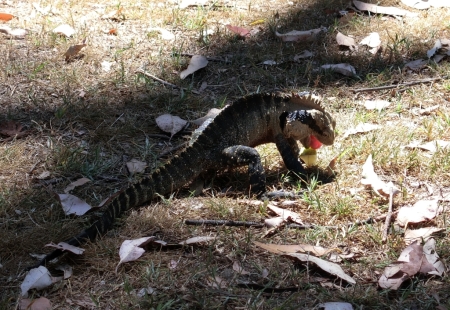
Eastern water dragon (Intellagama lesueurii ssp. lesueurii). Photo by Hapsis.
As it happens, Eastern water dragons (Intellagama lesueurii ssp. lesueurii) and brush turkeys (Alectura lathami) are partial to a bit of apple or pear–

Eastern water dragon vs. brush turkey. Photo by Hapsis.
— to the point of fighting over it.

Eastern water dragon vs. brush turkey. Photo by Hapsis.
Read the rest of this entry »
 Leave a Comment » |
Leave a Comment » |  Encounters with wildlife, Fauna, Photography, Wildlife | Tagged: Alectura, Australia, birds, brush turkey, eastern water dragon, Intellagama, Lane Cove National Park, reptiles |
Encounters with wildlife, Fauna, Photography, Wildlife | Tagged: Alectura, Australia, birds, brush turkey, eastern water dragon, Intellagama, Lane Cove National Park, reptiles |  Permalink
Permalink
 Posted by hapalochlaena
Posted by hapalochlaena
Monday, 30 October 2017
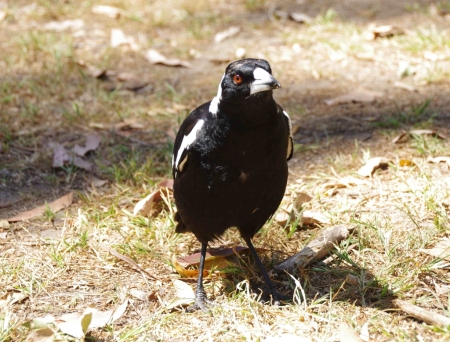
Australian magpie (Gymnorhina tibicen / Cracticus tibicen)
I was enjoying a picnic with some guests when this very friendly magpie (Gymnorhina tibicen / Cracticus tibicen) joined us, happily accepting pieces of apple from my hand.
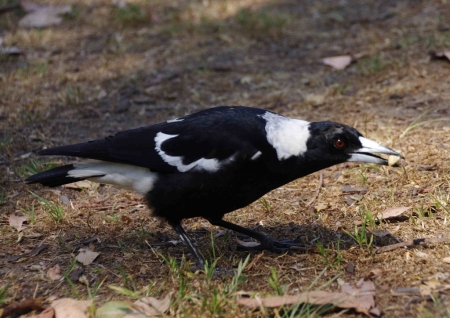
Australian magpie (Gymnorhina tibicen / Cracticus tibicen)
Read the rest of this entry »
 Leave a Comment » |
Leave a Comment » |  Encounters with wildlife, Fauna, Photography, Wildlife | Tagged: Australia, birds, Lane Cove National Park |
Encounters with wildlife, Fauna, Photography, Wildlife | Tagged: Australia, birds, Lane Cove National Park |  Permalink
Permalink
 Posted by hapalochlaena
Posted by hapalochlaena
Sunday, 29 October 2017

Huntsman spider (Isopeda sp.)
At about 0630hrs this morning I was alerted by a “plop” sound to the materialisation, next to my foot, of this Huntsman spider (Isopeda sp., probably Isopeda villosa).
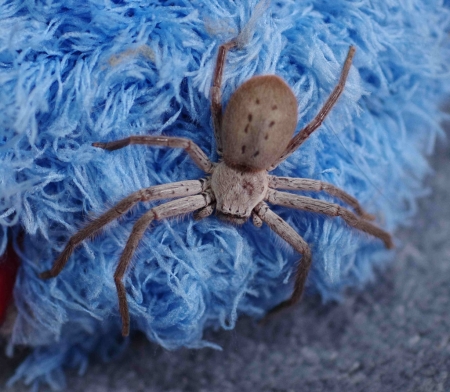
Huntsman spider (Isopeda sp.)

Huntsman spider (Isopeda sp.)
In the minute or so it took to find and deploy the camera the spider had climbed up to the ceiling again, and I thought I was going to end up with nothing useful but the three photos below:
Read the rest of this entry »
 Leave a Comment » |
Leave a Comment » |  Encounters with wildlife, Fauna, Photography, Wildlife | Tagged: Australia, huntsman, isopeda, spider |
Encounters with wildlife, Fauna, Photography, Wildlife | Tagged: Australia, huntsman, isopeda, spider |  Permalink
Permalink
 Posted by hapalochlaena
Posted by hapalochlaena
Saturday, 28 October 2017
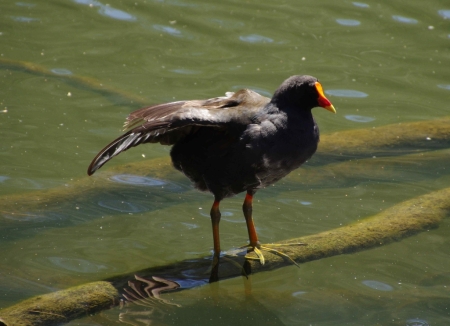
Dusky moorhen (Gallinula tenebrosa)
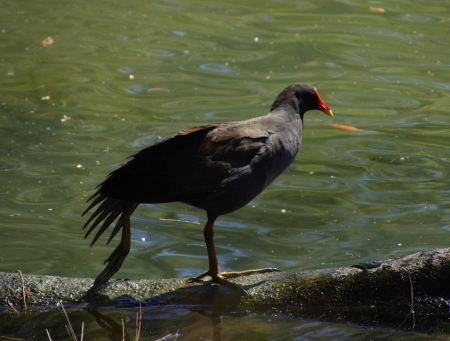
Dusky moorhen (Gallinula tenebrosa)
Dusky moorhens (Gallinula tenebrosa) on the Lane Cove River, upstream of the weir.

Dusky moorhen (Gallinula tenebrosa)
Read the rest of this entry »
 Leave a Comment » |
Leave a Comment » |  Encounters with wildlife, Fauna, Photography, Wildlife | Tagged: Australia, birds, Dusky moorhen, Gallinula, Lane Cove National Park |
Encounters with wildlife, Fauna, Photography, Wildlife | Tagged: Australia, birds, Dusky moorhen, Gallinula, Lane Cove National Park |  Permalink
Permalink
 Posted by hapalochlaena
Posted by hapalochlaena
Saturday, 21 October 2017

Juvenile Grey butcherbird (Cracticus torquatus)
There are many Grey butcherbird (Cracticus torquatus) families to be seen in the Lane Cove National Park at this time of year.
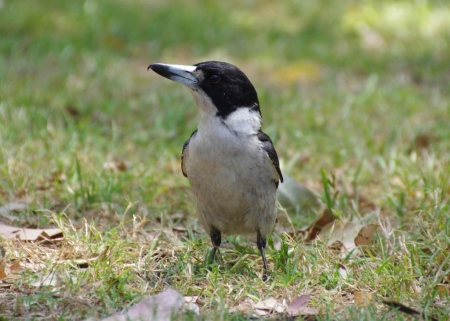
Adult Grey butcherbird (Cracticus torquatus)
Read the rest of this entry »
 Leave a Comment » |
Leave a Comment » |  Encounters with wildlife, Fauna, Photography, Wildlife | Tagged: Australia, birds, Butcherbird, Cracticus, Lane Cove National Park |
Encounters with wildlife, Fauna, Photography, Wildlife | Tagged: Australia, birds, Butcherbird, Cracticus, Lane Cove National Park |  Permalink
Permalink
 Posted by hapalochlaena
Posted by hapalochlaena
Friday, 20 October 2017
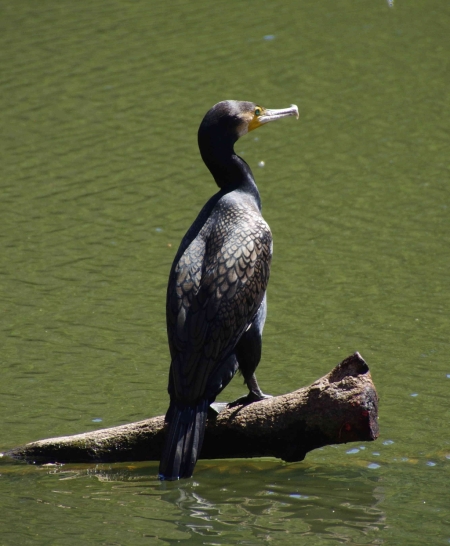
Great cormorant (Phalacrocorax carbo ssp. novaehollandiae)
The Great cormorant (Phalacrocorax carbo ssp. novaehollandiae) has beautifully marked feathers on its back and wings.

Great cormorant (Phalacrocorax carbo ssp. novaehollandiae) with dusky moorhen (Gallinula tenebrosa)
Read the rest of this entry »
 Leave a Comment » |
Leave a Comment » |  Encounters with wildlife, Fauna, Photography, Wildlife | Tagged: Australia, birds, cormorant, Lane Cove National Park, Phalacrocorax |
Encounters with wildlife, Fauna, Photography, Wildlife | Tagged: Australia, birds, cormorant, Lane Cove National Park, Phalacrocorax |  Permalink
Permalink
 Posted by hapalochlaena
Posted by hapalochlaena
Thursday, 19 October 2017

Rainbow lorikeet (Trichoglossus moluccanus)
The Rainbow lorikeet (Trichoglossus moluccanus) can commonly be seen all along the eastern coast of Australia. It is primarily a nectar and pollen feeder but has been observed to eat seeds and meat. Other species of parrots are also making this dietary change.

Rainbow lorikeet (Trichoglossus moluccanus)
Read the rest of this entry »
 Leave a Comment » |
Leave a Comment » |  Encounters with wildlife, Fauna, Photography, Wildlife | Tagged: Australia, birds, lorikeet, royal botanic garden |
Encounters with wildlife, Fauna, Photography, Wildlife | Tagged: Australia, birds, lorikeet, royal botanic garden |  Permalink
Permalink
 Posted by hapalochlaena
Posted by hapalochlaena
Wednesday, 18 October 2017

Australian White Ibis (Threskiornis molucca)
The Australian White Ibis (Threskiornis molucca) looks much better when it’s not rummaging in dustbins or rubbish tips — or stealing food from your picnic lunch.

Australian White Ibis (Threskiornis molucca)
Then again, I’ve seen trees stained white and even killed by their droppings. Definitely not my favourite bird.
Read the rest of this entry »
 Leave a Comment » |
Leave a Comment » |  Encounters with wildlife, Fauna, Photography, Wildlife | Tagged: Australia, birds, ibis, royal botanic garden, Threskiornis |
Encounters with wildlife, Fauna, Photography, Wildlife | Tagged: Australia, birds, ibis, royal botanic garden, Threskiornis |  Permalink
Permalink
 Posted by hapalochlaena
Posted by hapalochlaena
Tuesday, 17 October 2017

Little wattlebird (Anthochaera chrysoptera)

Little wattlebird (Anthochaera chrysoptera)
The Little wattlebird is Australia’s smallest wattlebird.

Little wattlebird (Anthochaera chrysoptera)
Read the rest of this entry »
 Leave a Comment » |
Leave a Comment » |  Encounters with wildlife, Fauna, Photography, Wildlife | Tagged: Anthochaera, Australia, bird, port stephens, wattlebird |
Encounters with wildlife, Fauna, Photography, Wildlife | Tagged: Anthochaera, Australia, bird, port stephens, wattlebird |  Permalink
Permalink
 Posted by hapalochlaena
Posted by hapalochlaena
Monday, 16 October 2017
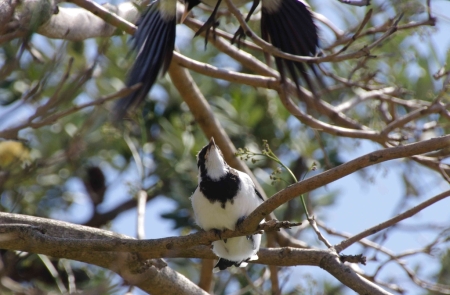
A Magpie-lark (Grallina cyanoleuca) fledgeling watches as its parent comes in to land
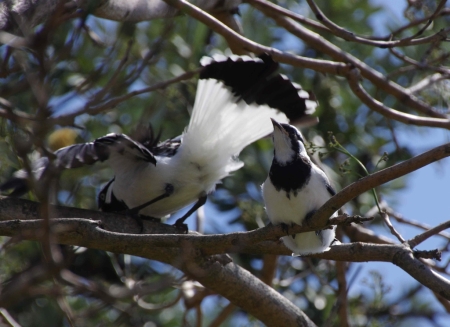
Magpie-lark (Grallina cyanoleuca) fledgeling watches as its parent comes in to land
This little family of Magpie-larks (Grallina cyanoleuca, a.k.a. peewee, peewit or mudlark) enjoyed hanging around in the trees direct;ly opposite the holiday unit. The female parent didn’t get a photo-op on this day, probably because she was out hunting.
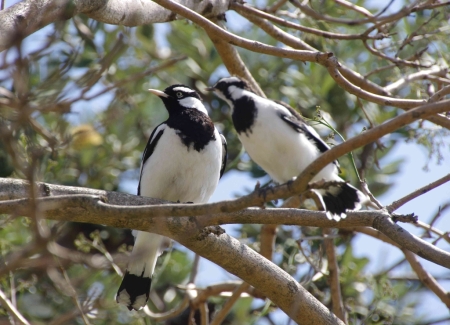
Magpie-lark (Grallina cyanoleuca) adult and fledgeling
Magpie-larks are sexually dimorphic — adult males have a black throat and females white.

Male Magpie-lark (Grallina cyanoleuca)
Read the rest of this entry »
 Leave a Comment » |
Leave a Comment » |  Encounters with wildlife, Fauna, Photography, Wildlife | Tagged: Australia, birds, Grallina, magpie-lark, mudlark, peewee, peewit, port stephens |
Encounters with wildlife, Fauna, Photography, Wildlife | Tagged: Australia, birds, Grallina, magpie-lark, mudlark, peewee, peewit, port stephens |  Permalink
Permalink
 Posted by hapalochlaena
Posted by hapalochlaena